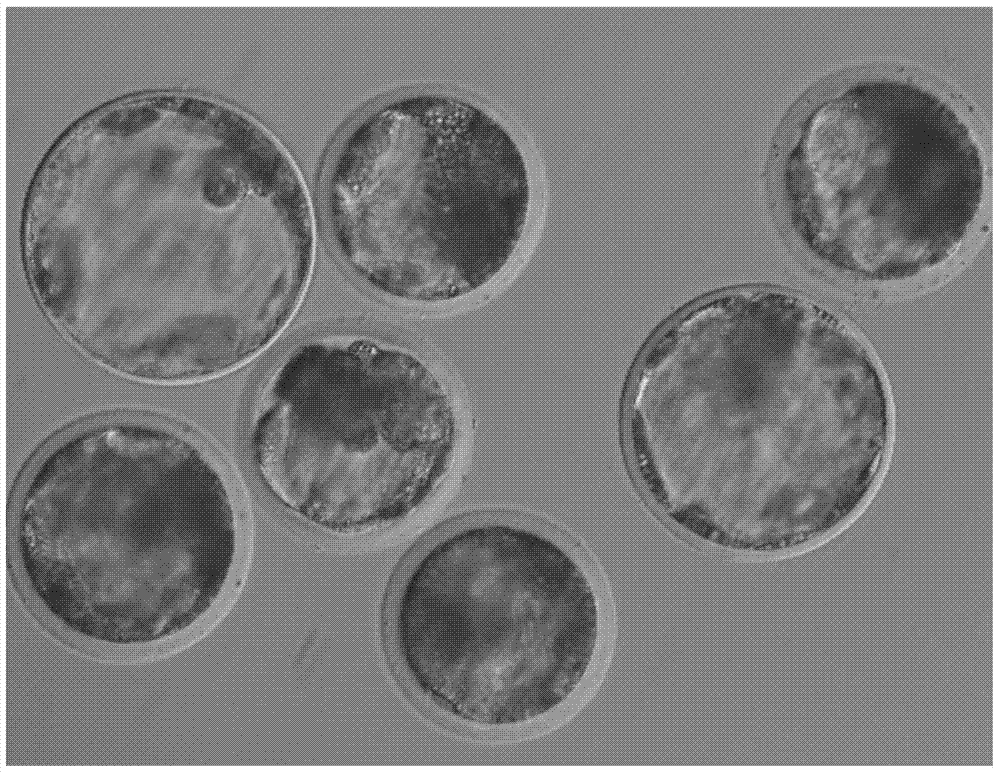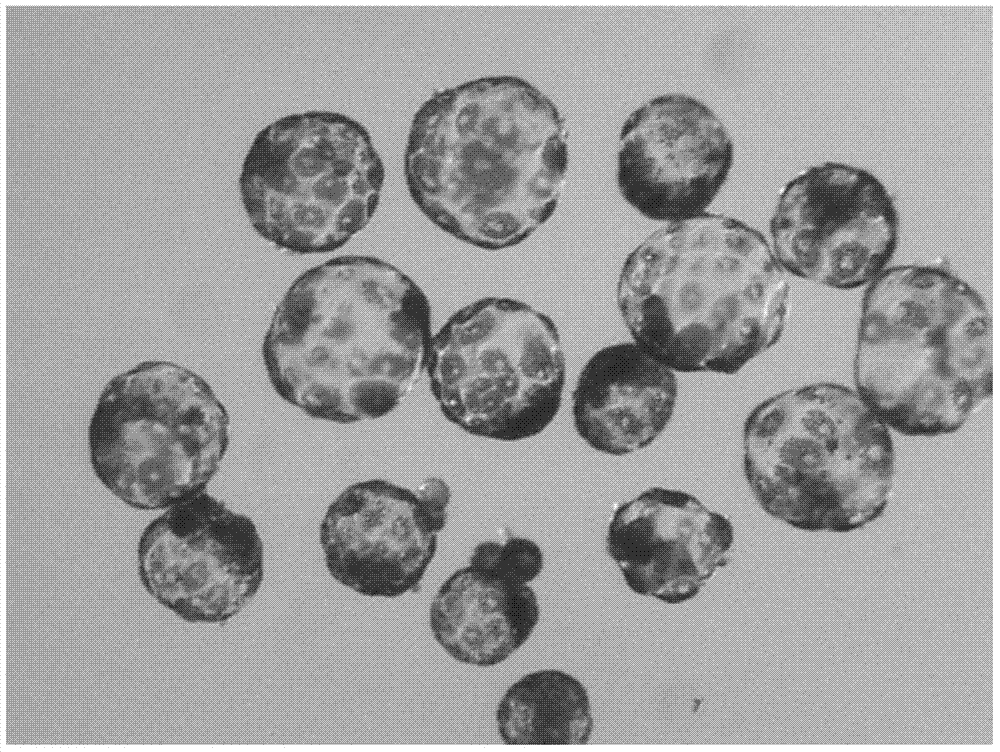Method for improving transfer embryo use ratio of multiparous mammal
A mammalian and embryo transfer technology, applied in the field of mammalian embryo transfer, can solve the problems such as insufficient utilization of cloned embryos, and achieve the effects of reducing the number, reducing the cost and reducing the implantation.
- Summary
- Abstract
- Description
- Claims
- Application Information
AI Technical Summary
Problems solved by technology
Method used
Image
Examples
Embodiment 1
[0068] According to the data of our laboratory, the number of cloned pig embryos transferred in the range of 95±5 has the best pregnancy rate and delivery rate, so a certain number of PA embryos are added in this range to conduct experiments to study the effect of PA embryos on cloned embryo transfer of multiple-fetal animals Whether the effect is better.
[0069]
[0070] The results showed that within the range of the same number of transplanted embryos, adding PA embryos relatively reduced the number of HMC embryos, did not reduce the transplantation effect, and even improved the transplantation efficiency. After adding PA embryos, the delivery rate and litter size of transplanted recipients were improved, and the utilization rate of cloned embryos (litter size / HMC transplanted number) increased to 2.5 times of the original.
Embodiment 2
[0072] Cloned embryos and parthenogenetic activated embryos were obtained according to the experimental steps in the technical scheme. The total number of transplanted embryos is within the range of 95±10, and the parthenogenetic activated embryos accounting for 10%, 20%, 30%, and >40% of the total embryos transferred are respectively transplanted to different surrogate recipients, and the delivery rate and delivery rate of the surrogate recipients are observed and compared. Average litter size. The results are shown in Table 2.
[0073] Table 2 Mixed transfer data of different proportions of parthenogenetic activated embryos
[0074]
[0075] Note: Different letters a and b in the same column indicate extremely significant difference, P<0.01
[0076] >40% of the data contain proportions from about 0% to about 50%
[0077] The data show that when parthenogenetically activated embryos account for about 30% of the number of transferred embryos, the delivery rate and averag...
PUM
 Login to View More
Login to View More Abstract
Description
Claims
Application Information
 Login to View More
Login to View More - R&D
- Intellectual Property
- Life Sciences
- Materials
- Tech Scout
- Unparalleled Data Quality
- Higher Quality Content
- 60% Fewer Hallucinations
Browse by: Latest US Patents, China's latest patents, Technical Efficacy Thesaurus, Application Domain, Technology Topic, Popular Technical Reports.
© 2025 PatSnap. All rights reserved.Legal|Privacy policy|Modern Slavery Act Transparency Statement|Sitemap|About US| Contact US: help@patsnap.com



